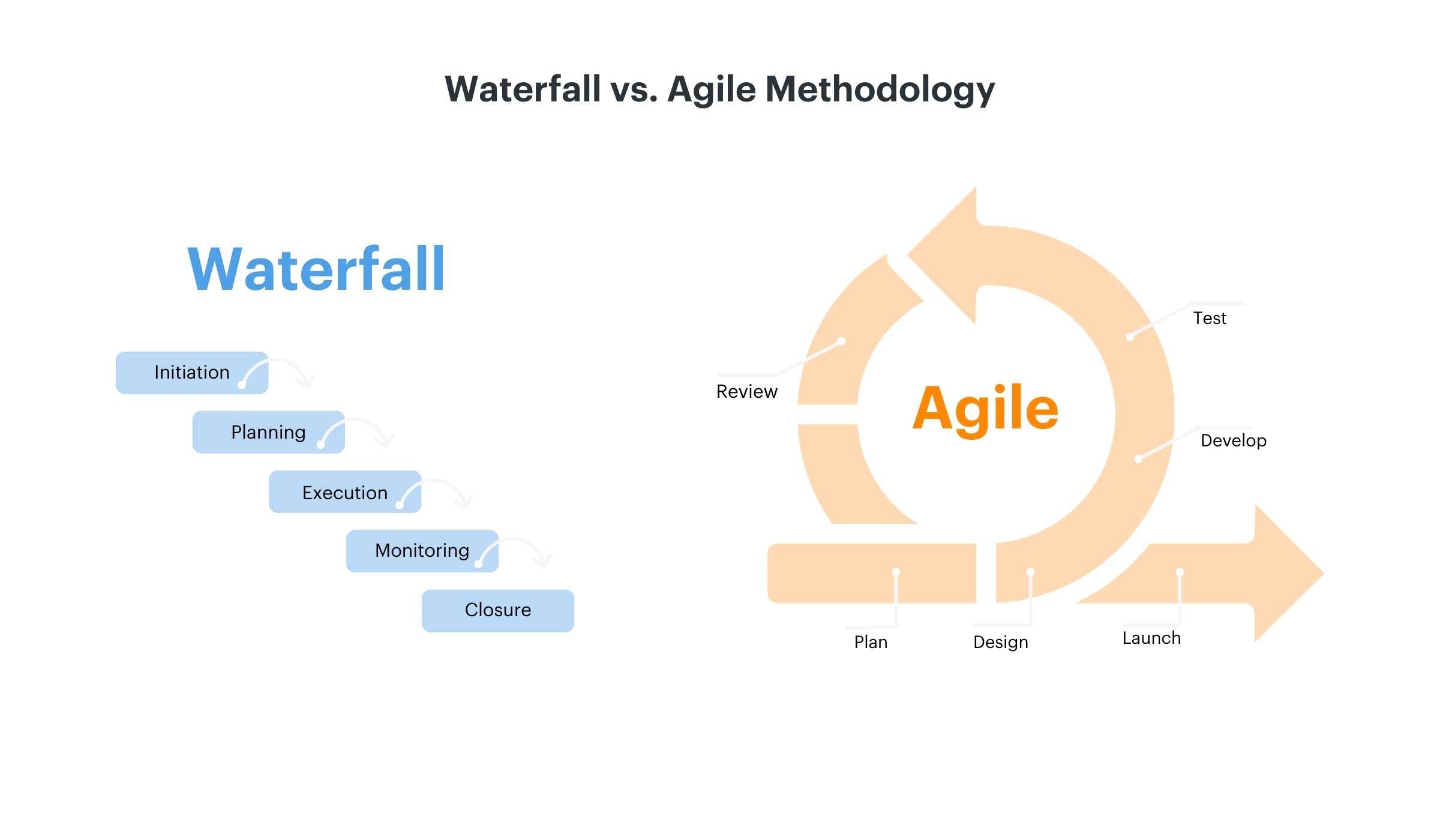The rise of Agile program management came as industries faced increasing demands for adaptability. This methodology revolutionized program management by introducing an iterative approach that values flexibility, whereas traditional program management offers a structured, step-by-step approach for project guidance. There are many factors to consider when selecting the right program management office (PMO) model as they are not a one-size-fits-all solution. These factors can include the scope of work, project complexity, and adaptability to change.
Agile Program Management
Agile program management focuses on collaboration, flexibility within a team, and external feedback for success. By having continuous feedback and collaborative efforts, obstacles can be resolved throughout every stage of the project. The Agile method has four essential values to increase project efficiency:
- Individuals and Interactions over Processes and Tools: Building collaborative teams to drive development instead of processes and tools instills transparency, allowing changes to be made based on needs.
- Working Software over Comprehensive Documentation: Delivering a tangible product that provides value to the customer, rather than extensive documentation.
- Customer Collaboration over Contract Negotiation: Involving stakeholder feedback in the development process is more efficient than strictly adhering to initial contractual agreements.
- Responding to Change over Following a Plan: Encouraging flexibility and adaptability rather than following a detailed, defined set plan, allows teams to adjust plans and strategies accordingly as priorities shift.
Along with these values, there are two distinct frameworks Agile uses, Scrum and Kanban. They equally stress the importance of customer satisfaction and are recognized for promoting efficient decision-making and time management.
Traditional Program Management
Traditional program management, also known as the Waterfall method, is an established methodology for managing projects sequentially with well-defined stages and predetermined requirements. This PMO method is more structured and is not meant to deviate from the initial project scope. The sequential phases of traditional program management are:
- Initiation may include assessing resources, how realistic the objectives are, and potential risks that may arise.
- Planning includes allocating resources, dividing the project into smaller tasks, setting timelines, and establishing performance metrics.
- Execution is taking the detailed project plan and putting it into action. Clear communication, coordination, and task management are all essential aspects of this phase.
- Monitoring involves the program manager overseeing the progress and ensuring that everything is on the right track.
- Closure consists of analyzing the metrics, obtaining official acceptance from stakeholders, and conducting a final assessment to ensure all objectives have been met.
Key Differences: Agile vs. Traditional
- Monitoring Progress: For Agile, stakeholders meet with teams daily to identify any bottlenecks and discuss the project status. With traditional, the project manager may meet weekly with their team to review status updates and will update the necessary stakeholders separately.
- Escalation: When issues arise, the Agile method collaborates with the entire team to come to a collective resolution. The traditional method also involves the team, but the project manager evaluates the issue and reaches a final decision independently.
- Client Involvement: This is very high for Agile as collaboration begins from the start of the project. Traditional has low client involvement. Clients are involved in the early initiation phase of the process but are not involved once the project has kicked off.
Other differences include flexibility, documentation practices, and communication styles.
Benefits of Agile Program Management
Enhanced Flexibility and Collaboration
The client is involved in the project initiative from the beginning, alongside other non-traditional project members, such as those from various departments or external consultants. With this additional input, agile focused organizations can shift priorities quickly as a direct response to the needs of the client. With cross-functional teamwork and frequent communication, this fosters a strong culture of collaboration, leveraging diverse perspectives, driving innovation, and creative problem-solving.
Continuously Improved Quality
The proactive approach of continuous enhancement not only leads to a higher standard of quality in the final product and also ensures any abnormalities from the desired outcome are promptly addressed. Integrating quality assurance measures into every phase of development not only enhances the result but also instills a sense of pride and ownership among team members, resulting in a more robust and reliable final product.
Efficient Risk Management
Dividing projects into smaller, more manageable segments allows teams to regularly review and assess progress, enabling prompt adjustments when issues arise. This approach to risk management significantly decreases the chances of major project setbacks or failures, ensuring they are mitigated before they escalate into significant obstacles. This leads to a more resilient project and provides stakeholders with a higher level of confidence in the project’s ultimate success.
Benefits of Traditional Program Management
Clear Expectations and Clear Responsibilities
Roles and responsibilities are meticulously set in the planning phase, ensuring each team member understands their specific duties and contributions, leaving little room for ambiguity. This clarity significantly simplifies the estimation of costs, schedules, and required resources. Additionally, clear expectations provide a transparent view to both team members and stakeholders, ensuring everyone understands what is expected at each phase of the project.
Detailed Documentation
Every step in the traditional method requires clear documentation. This documentation serves as a tangible record of project scope, objectives, and strategies, ensuring all management or other stakeholders remain informed throughout the duration of the project. This level of detail provides a clear and structured roadmap for the entire team and instills confidence in stakeholders, assuring them the project is being executed with precision and care.
Accountability and Control
Project managers ensure their team is held accountable for reaching milestones and remaining within set timeframes and budgets by offering guidance, support, and resources when needed. The project manager approves any change request after reviewing the potential impact. This level of control is especially valuable in industries or projects where adhering to strict guidelines is crucial. Traditional program management provides a level of stability and predictability that can be crucial in managing complex and high-risk projects.
The Best Method for Your Business
When it comes to these two methodologies, there is not a one-size-fits-all approach. The biggest factors in choosing are usually the size of the company, how extensive the scope of work is, and the risk level. Larger companies or initiatives typically take the traditional route and Agile is typically better suited for small to medium-scale organizations or projects. If there is a project with a high risk, it will be more beneficial to adapt the Agile framework as issues can be addressed and resolved within a shorter timeframe. By reviewing these factors, organizations can make informed decisions on aligning their chosen methodology with the specific needs and dynamics of their projects.






